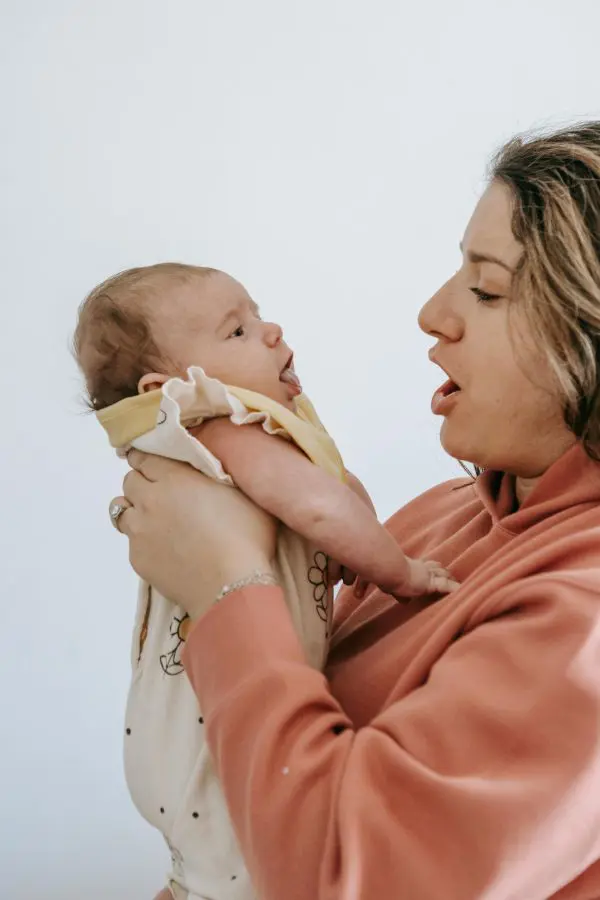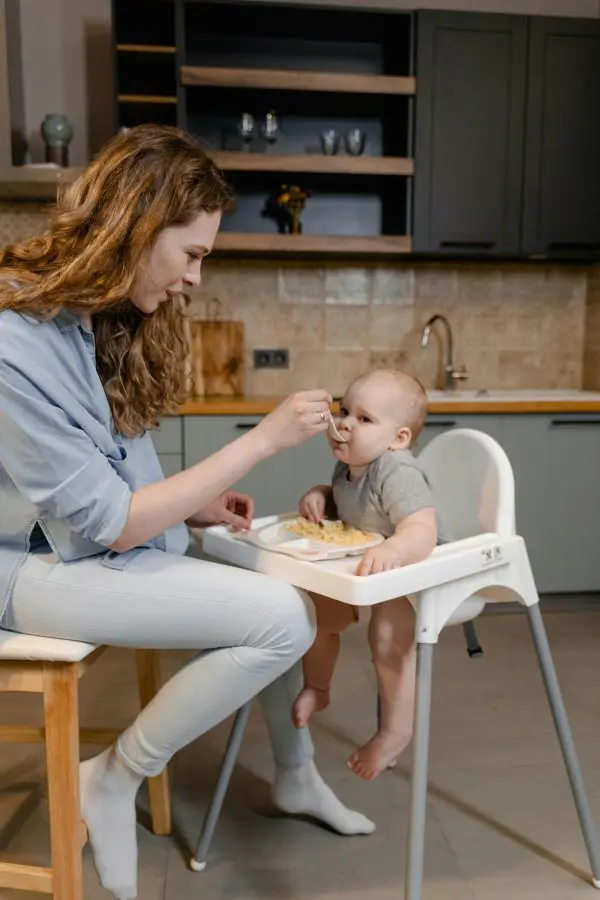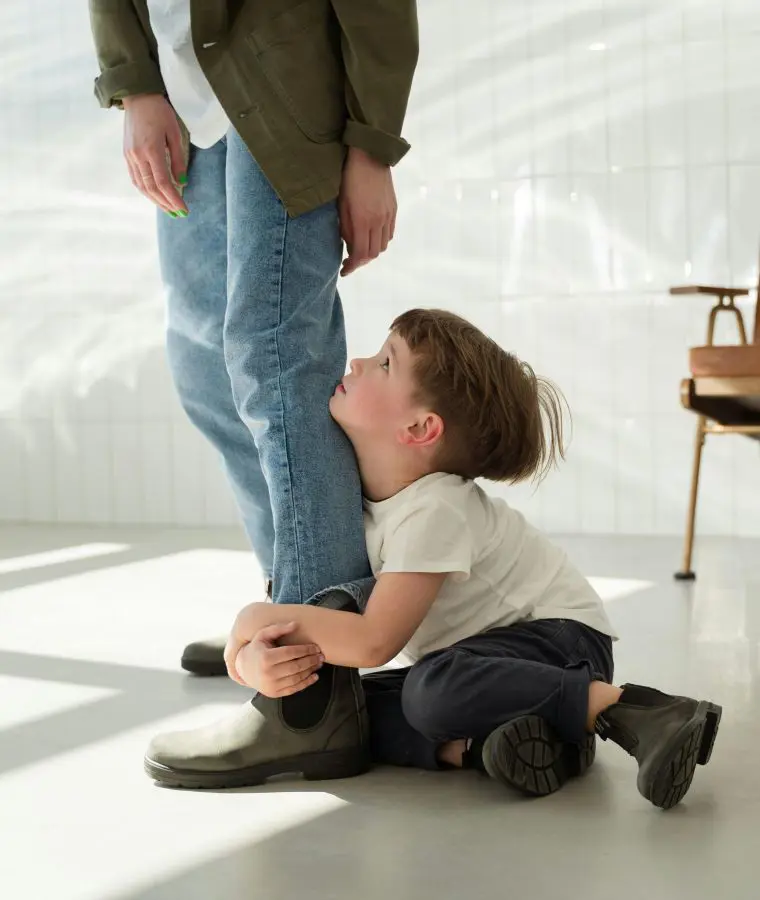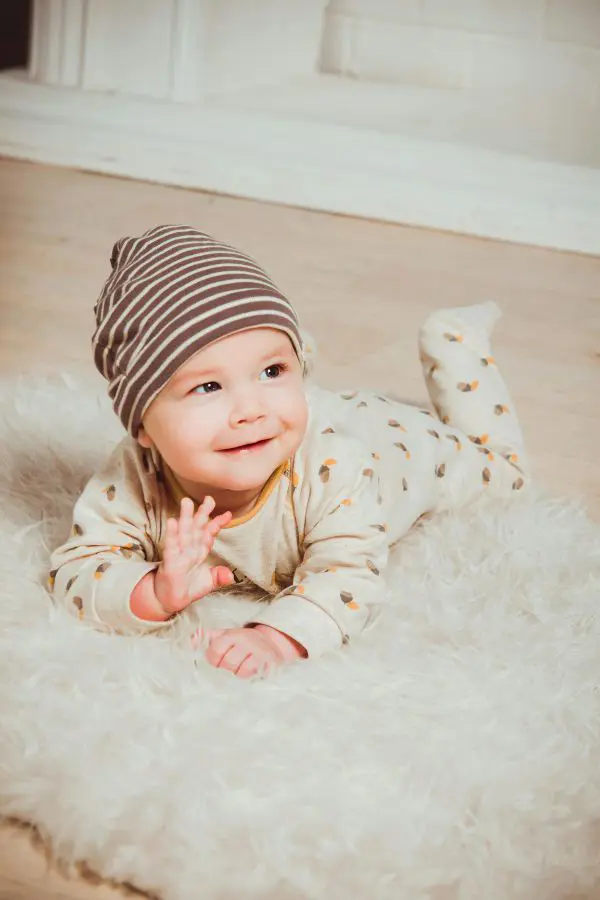When Do Babies Start Smiling?
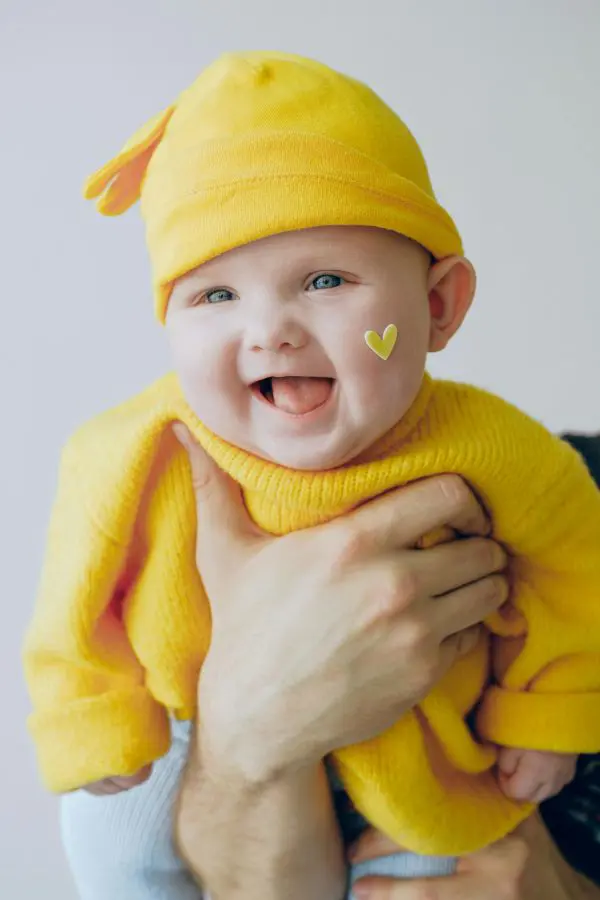
In no other stage of parenting are you ever gonna feel as happy as your baby gives his or her first smile. It is one that not only defines your child's emotional growth but is also a way to grow even closer to your beloved little one.
However, the question arises, when do babies begin to smile, and what does it mean? It's time to take a closer look at this question and discover how baby smiles, and the science behind it. Let's explore everything!
The Timeline Of Smiling
Babies' smiles are more than just adorable; they are a key indicator of their social and emotional development. Smiling is a complex process that involves both physical and cognitive growth. While some smiles are purely reflexive, others signify genuine happiness and recognition.
1. Reflex Smiles (Birth to 2 Months)

Those early, fleeting smiles you might notice in your newborn, especially during sleep, aren't quite what they seem. These are called reflex smiles- involuntary facial movements that occur even before birth. Babies may display these reflexive grins in response to internal sensations, like gas or physical comfort. While adorable, these early smiles aren't yet connected to social interaction or emotional expression.
During the first few weeks, you might notice your baby smiling:
- During sleep or drowsy states
- After feeding
- When experiencing physical comfort
- Randomly throughout the day
2. Social Smiles (6-8 weeks)

Around six to eight weeks of age, something remarkable happens- your baby begins to smile in response to external stimuli, particularly human faces and voices. This milestone represents a significant leap in social development and marks the beginning of intentional communication.
These early social smiles differ from reflex smiles in several ways:
- They occur in response to faces and voices
- They last longer than reflex smiles
- The timing is more predictable
- They are accompanied by other signs of engagement, like eye contact
3. Engaging Smiles (2-3 Months)

By 2 to 3 months, babies typically begin to exhibit more deliberate social smiles. These smiles are characterized by longer duration and greater facial engagement, often involving the eyes lighting up and a more symmetrical expression. At this point, babies smile intentionally in response to interactions with caregivers, indicating that they are starting to engage socially and emotionally with their environment.
The Development of Different Types of Smiles (2-4 Months)
As your baby grows, their smile repertoire expands. Between two and four months, you'll notice various types of smiles emerging:
- The Recognition Smile: Reserved for familiar faces, especially parents and primary caregivers.
- The Social Smile: Used during interactions with others.
- The Play Smile: Appears during enjoyable activities.
- The Responsive Smiles: Given in response to others' smiles.
What Triggers A Baby's Smile?

Parents and caregivers need to know babies smile only when they feel something joyful. They show some happiness through pleasuring smiles when they experience enjoyment in their individual way. Let's see some of the reasons that may make your baby smiley:
- Familiar Faces and Voices: Babies show natural attraction towards their parents and caregivers. That's why their face will filled with beautiful smiles after seeing those familiar faces or hearing their soothing voice, since it provides a sense of security and comfort.
- Playful Interactions: Simple games like peek-a-boo, gentle tickles, and other playful activities help babies smile. These fun activities help your baby's developing social and cognitive skills.
- Bright Colors and Toys: Babies can't resist looking at bright and moving objects. That's why introducing visually stimulating toys can encourage smiles and engagement.
- Mirror Reflections: Around four months, babies begin to identify themselves when they see their reflection in mirrors. While they may not fully understand the concept of self, their reflection often brings out joyful smiles.
The Importance Of Smiling In Development

Smiling is not just an adorable milestone; it plays a crucial role in a baby's development. Here are some key aspects:
1. Emotional Development
Smiling is one of the first ways babies communicate their feelings. A genuine smile can indicate pleasure, comfort, and happiness. As babies learn to smile in response to others, they begin to understand social cues and develop emotional connections with caregivers.
2. Cognitive Development
The act of smiling also signifies cognitive growth. As babies learn to recognize faces and respond socially, they are developing their cognitive abilities. This interaction helps them understand their environment better and fosters learning through engagement.
3. Social Skills
Smiling serves as an essential building block for social skills. It encourages bonding between the baby and caregivers, reinforcing positive interactions that are vital for healthy emotional development. Through smiling, babies learn about reciprocity in relationships- understanding that their actions can elicit responses from others.
How To Encourage Your Baby To Smile
Parents often think about how they can encourage their baby to smile more frequently and naturally. Here are some effective strategies:
- Maintain Eye Contact: Babies love to look at faces. When you make direct eye contact with your baby while talking or singing it creates a stronger emotional bond and makes them smile.
- Use Facial Expressive Facial Gestures: Exaggerated facial expressions, such as wide smiles or raised eyebrows, capture the baby's attention and make them more likely to respond with a smile.
- Sing and Talk to Your Baby: Use a soft, melodic tone, as it can soothe your baby and encourage them to smile. Singing lullabies or talking about your day helps strengthen your bond.
- Play Interactive Games: Games like peek-a-boo or "This Little Piggy" are great for eliciting smiles. These activities combine visual auditory, and tactile stimulation, keeping your baby engaged.
- Reading Your Baby's Cues: Understanding when your baby is ready to interact is crucial. Look at these signs:
- Alert, calm state
- Open, focused eyes
- Relaxed body posture
- Turning toward voices or faces
- Provide Physical Affection: Cuddles, kisses, and gentle touches create a sense of security that encourages smiling.
The Science Behind Baby Smiles

Smiling is not just about happy moments and all, there is a meaningful science behind it, which lots of people are unaware of. Thus, let's find out what science tells us about your baby's smile:
1. Neurological Development
Baby smiles are closely tied to brain development. The emergence of social smiling coincides with significant changes in the cerebral cortex, particularly in areas responsible for:
- Visual processing
- Emotional regulation
- Social cognition
- Facial recognition
This neural maturation enables babies to process facial expressions and respond appropriately, laying the groundwork for more complex social interactions.
2. The Role of Mirror Neurons
Recent research highlights the importance of mirror neurons in smile development. These specialized brain cells activate both when babies act and when they observe others performing the same action. This mechanism helps babies learn to mimic facial expressions and understand emotional responses.
When Should You Be Concerned?
While every baby develops at their own pace, it's natural to wonder if your baby's development is on track. Here are some signs that may warrant a discussion with your pediatrician:
- No Social Smiles by 3 Months: If your baby hasn't started smiling socially by 3 months, it could indicate a delay in social or emotional development.
- Lack of Eye Contact: Difficulty maintaining eye contact may be a sign of development concerns, such as autism spectrum disorder.
- Limited Interaction: If your baby seems uninterested in engaging with their surroundings, it's worth mentioning to your doctor.
Things to Remember: While most babies begin social smiling between 6-8 weeks, there's a considerable normal variation. Some babies may take a bit longer to reach this milestone, particularly:
- Premature babies (adjust for gestational age)
- Babies with different temperaments
- Those recovering from early health challenges
The Long-Term Impact Of Early Smiles
The early smiles may construct positivity for the long term in your toddlers' development, like:
- Building Social Bonds
Early smiling plays a crucial role in:
- Strengthening parent-child attachment
- Develop social skills
- Building emotional intelligence
- Enhancing communication abilities
- Cognitive Development
Smiling interactions contribute to:
- Language development
- Social understanding
- Emotional regulation
- Pattern recognition
Supporting Smile Development in Special Circumstances
-
Premature Babies
For premature infants:
- Age expectations for milestones: Premature babies often achieve developmental milestones later than full-term babies. For example, while typical infants might begin to smile between 6 to 12 weeks, a premature baby's timeline is adjusted according to their gestational age at the time of birth. If a baby was born two months early, they may not smile until they are around 8 to 14 weeks old, considering their adjusted age.
- Create a calm, nurturing environment: A soothing environment is crucial for premature babies who may be more sensitive to sensory overload. This can include dim lighting, soft sounds, and gentle movements.
- Follow the baby's lead for interaction: Observing and responding to a premature baby's cues is vital. If they seem sleepy or fussy, it's important to give them space rather than pushing for interaction. Conversely, if they are alert and looking around, this is an excellent time to engage with them through gentle play or talking.
- Maintain consistent caregiving routines: Consistency helps build trust and security in premature infants. Establishing regular feeding times, nap schedules, and playtime can create a sense of predictability that fosters emotional comfort.
-
Babies with Special Needs
Some babies may need additional support:
- Early intervention services: For babies with special needs, accessing early intervention services can provide essential support tailored to their smile and other developmental challenges. This service might include physical therapy or speech therapy aimed at improving communication skills and social interactions.
- Modified interaction techniques: Interaction techniques may need to be adjusted based on the baby's abilities. If a child has motor delays that affect their ability to respond physically, caregivers can use visual stimuli like colorful toys or mirrors to encourage smiles. For instance, placing a mirror in front of the baby during tummy time can help them see their own reflections and elicit smiles as they start recognizing themselves.
- Specialized developmental support: Specialized support might involve working with developmental specialists who can assess the child's progress and suggest activities that align with their capabilities. Such as using tactile toys that encourage grasping can promote fine motor skills while also engaging the baby's interest to smile as they explore new textures.
- Regular monitoring of progress: Consistent check-ups with healthcare providers are crucial for monitoring the developmental progress of babies with special needs.
What Comes After Smiling?

Once your baby has mastered smiling, several other milestones typically follow:
- Cooing: Around 2-3 months, babies begin making cooing sounds that resemble vowel-like sounds.
- Giggling: By 4-5 months, many babies start giggling in response to playful interactions.
- Laughter: Full-blown laughter usually emerges around 5-6 months, adding another layer of joy for parents.
Answering Some of Your Thoughts
-
Do premature babies smile later?
Premature babies may read developmental milestones, including smiling, slightly later than full-term babies, adjusted age-calculated based on their due date rather than their birth date- is a more accurate measure for tracking milestones.
-
Can babies smile too early?
Reflex smiles can occur from birth, but genuine social smiles typically emerge around 6 weeks. If your baby smiles earlier, it's likely a reflex rather than a social.
-
What does it mean if my baby smiles a lot?
Frequent smiling is usually a sign of a happy, engaged baby. It reflects their comfort and growing ability to interact with their environment.
Final Thoughts
Your baby's first smile is a magical moment that marks the beginning of their journey into social and emotional development. While the timing of this milestone may vary, understanding the stages and factors that influence smiling can help you nurture your baby's growth. Celebrate every smile, knowing that each one strengthens your bond and lays the foundation for a lifetime of joyful interactions.
